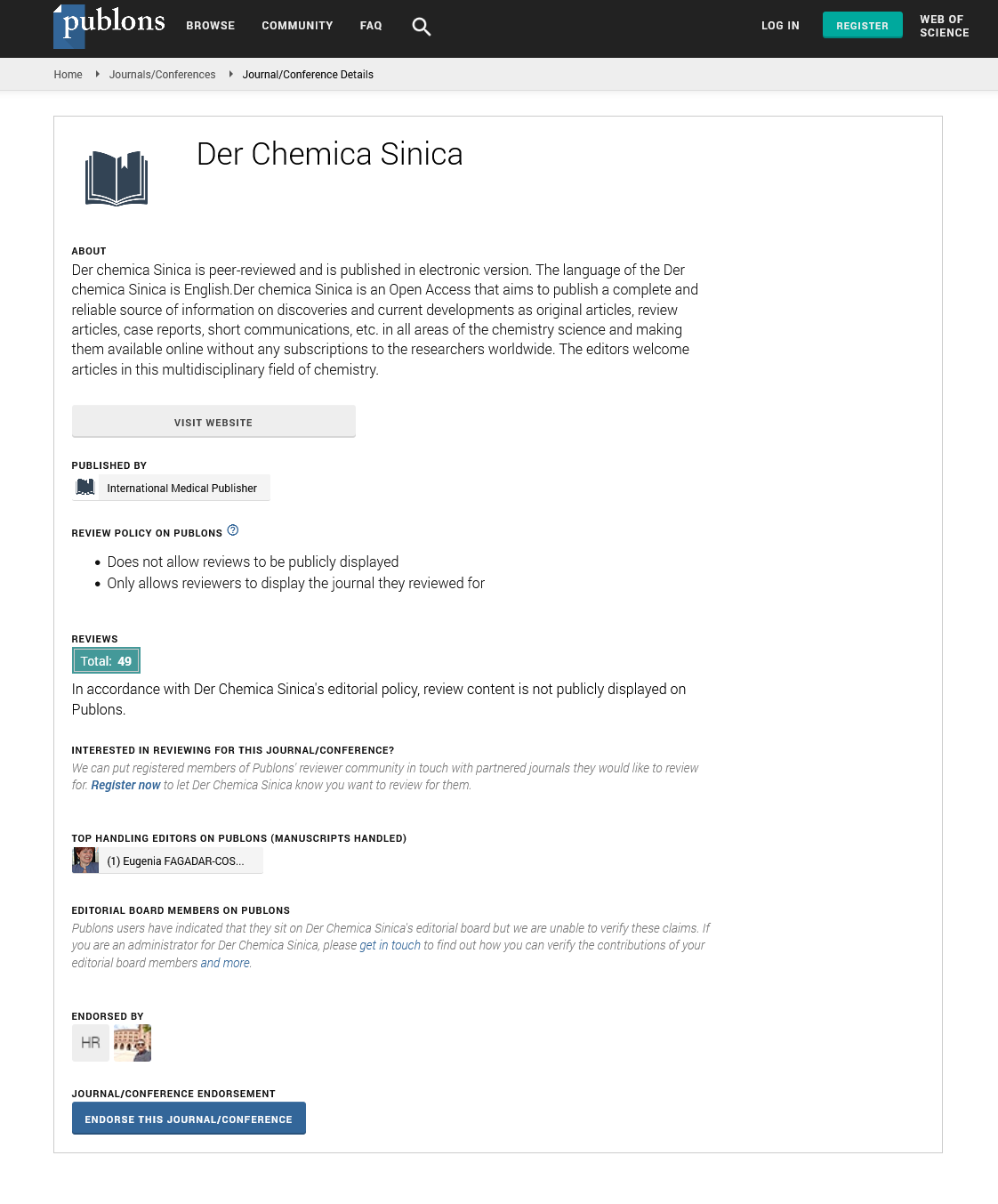ISSN : 0976-8505
Der Chemica Sinica
Abstract
Use of semi-conducting lead sulfide for degradation of azure-B: An eco-friendly process
Different methods have been adopted for the removal and degradation of dyes from effluents of textile, dyeing and printing industries. These methods have their own merits and drawbacks. In the present investigation, Lead sulfide has been used as a photocatalyst for the degradation of azure-B. The effect of different parameters like the pH, concentration of dye, amount of semiconductor and light intensity on the rate of reaction has been investigated. The reaction follows pseudo-first order kinetics. The optimum conditions were obtained as: [azure-B] = 3.00·10–6 M; PbS = 0.12 g; pH = 8.0, and light intensity = 37.0 mW·cm–2. The rate constant was 2.50·10–3 sec–1. A mechanism has been proposed for the degradation of azure-B involving hydroxyl radicals
Author(s): 1Inderjeet Yadav, Shamta Nihalani and 2Shipra Bhardwaj
Abstract | PDF
Share This Article
Google Scholar citation report
Citations : 6019
Der Chemica Sinica received 6019 citations as per Google Scholar report
Der Chemica Sinica peer review process verified at publons
Abstracted/Indexed in
- Google Scholar
- Open J Gate
- Genamics JournalSeek
- China National Knowledge Infrastructure (CNKI)
- Directory of Research Journal Indexing (DRJI)
- Publons
- MIAR
- International Committee of Medical Journal Editors (ICMJE)
- Serials Union Catalogue (SUNCAT)
- Geneva Foundation for Medical Education and Research
- Secret Search Engine Labs
- Euro Pub
- CAS (Chemical Abstracting Services)
- University of Barcelona
Open Access Journals
- Aquaculture & Veterinary Science
- Chemistry & Chemical Sciences
- Clinical Sciences
- Engineering
- General Science
- Genetics & Molecular Biology
- Health Care & Nursing
- Immunology & Microbiology
- Materials Science
- Mathematics & Physics
- Medical Sciences
- Neurology & Psychiatry
- Oncology & Cancer Science
- Pharmaceutical Sciences
